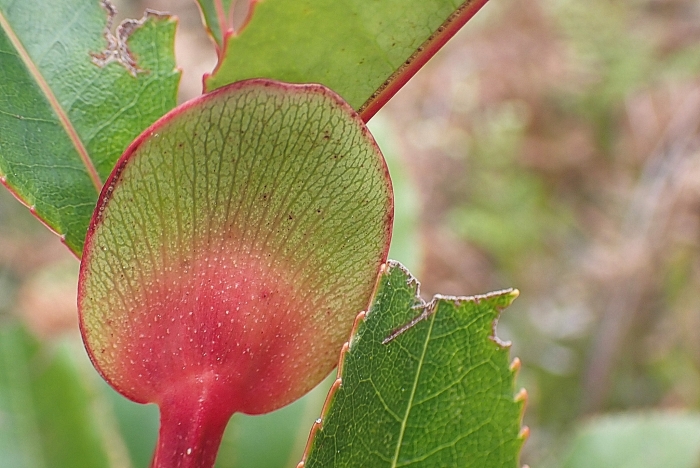Butterspoon Tree
(Cunonia capensis)
Butterspoon Tree (Cunonia capensis)
/
/

Di Turner
Public Domain
Image By:
Di Turner
Recorded By:
Copyright:
Public Domain
Copyright Notice:
Photo by: Di Turner | License Type: Public Domain | License URL: http://creativecommons.org/publicdomain/zero/1.0/ | Rights Holder: Di Turner | Publisher: iNaturalist | Date Created: 2021-09-29T11:15:02-07:00 |























































Estimated Native Range
Summary
Cunonia capensis, commonly known as the Butterspoon Tree or Rooiels, is an evergreen tree native to the Afromontane forests of South Africa. It is a versatile species that can adapt to both forested areas and open woodlands. In its natural habitat, it is often found along streams and in moist, sheltered ravines. This tree typically reaches a height of 5 meters in open sun but can grow up to 10 meters tall in forest conditions, with a moderate growth rate. Its foliage is glossy with tints of red, particularly on the new growth, and it produces dense, fragrant, cream-colored flowers from February to May, which are attractive to a variety of pollinators.
The Butterspoon Tree is valued for its ornamental qualities, including its attractive foliage and fragrant flowers. It is increasingly popular in southern African gardens and is suitable for urban planting due to its gentle, non-invasive root system. It can be planted near buildings and is used as a specimen tree. While it grows well in both full sun and shade, it does not thrive in arid conditions, preferring a temperate climate with ample water, especially during its first few years. It tolerates some frost and is one of the fastest-growing trees in southern Africa when water is sufficient. Gardeners should ensure that the soil is well-drained but retains moisture, as the tree does not tolerate drought well.CC BY-SA 4.0
The Butterspoon Tree is valued for its ornamental qualities, including its attractive foliage and fragrant flowers. It is increasingly popular in southern African gardens and is suitable for urban planting due to its gentle, non-invasive root system. It can be planted near buildings and is used as a specimen tree. While it grows well in both full sun and shade, it does not thrive in arid conditions, preferring a temperate climate with ample water, especially during its first few years. It tolerates some frost and is one of the fastest-growing trees in southern Africa when water is sufficient. Gardeners should ensure that the soil is well-drained but retains moisture, as the tree does not tolerate drought well.CC BY-SA 4.0
Plant Description
- Plant Type: Tree
- Height: 10-15 feet
- Width: 5-10 feet
- Growth Rate: Moderate
- Flower Color: Cream
- Flowering Season: Summer, Fall
- Leaf Retention: Evergreen
Growth Requirements
- Sun: Full Sun
- Water: Medium, High
- Drainage: Slow, Medium
Common Uses
Bird Garden, Border Plant, Hedges, Low Maintenance, Potted Plant
Natural Habitat
Native to Afromontane forests and along streams in moist, sheltered ravines
Other Names
Common Names: Butterknife Tree, African Red Alder, Red Alder, Skedträd
Scientific Names: , Cunonia capensis, Oosterdyckia capensis, Oosterdykia capensis,
GBIF Accepted Name: Cunonia capensis L.